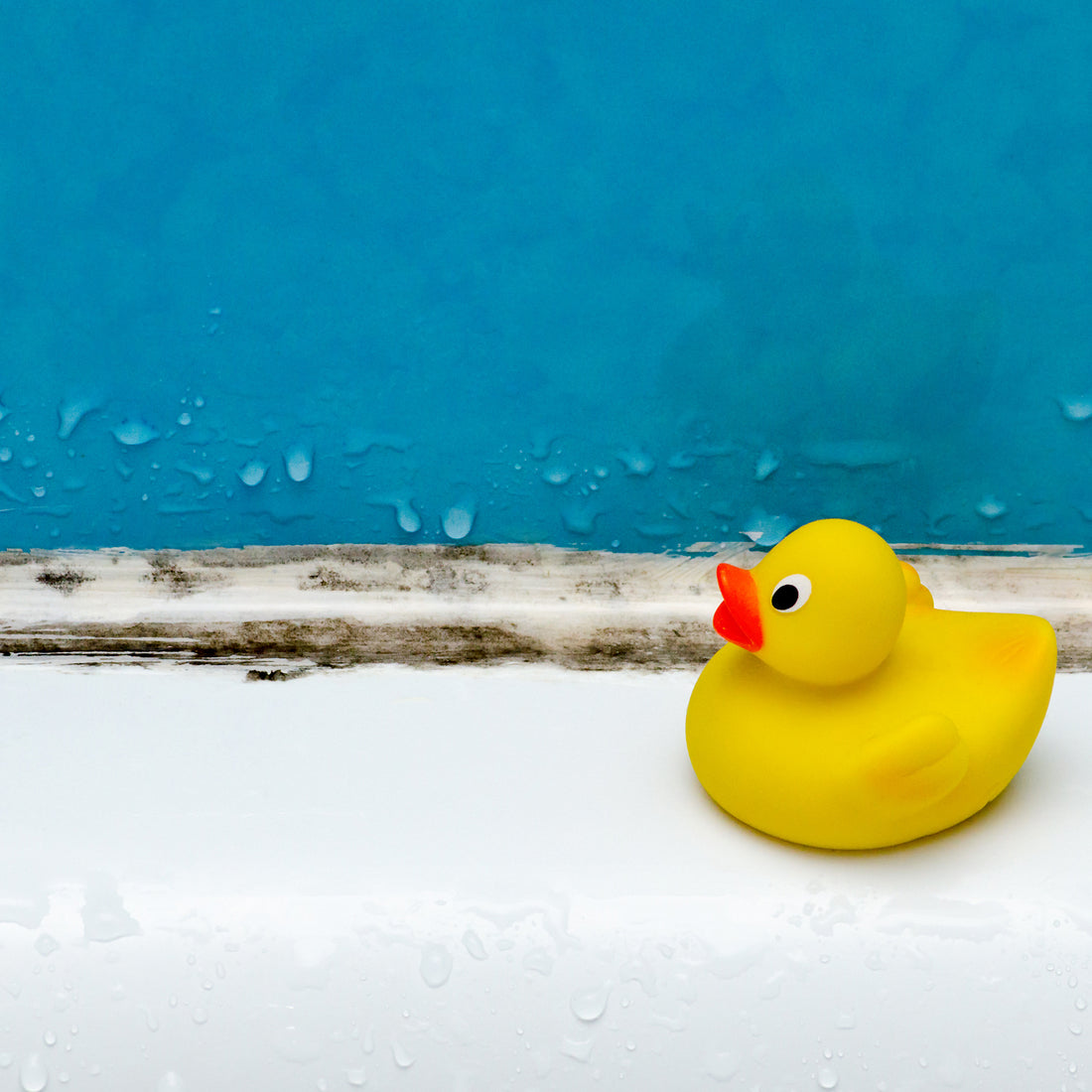Black Mold Removal and Prevention: DIY Tips for a Safe, Mold-Free Home

Share
Understanding and Managing Black Mold in Your Home
Imagine a world where millions of mold species thrive, most peacefully coexisting with us, but a select few posing potential health risks. One such concern is black mold, notorious for its ominous appearance and rumored dangers, especially in damp places like bathrooms.
Debunking Myths
Let’s clear the air about "toxic black mold." While there's been sensationalism about its health impacts in the media, recent studies have shown that prolonged exposure to black mold can indeed pose serious health risks. Symptoms such as respiratory issues, allergies, and, in severe cases, more systemic effects can occur. It's essential to take these symptoms seriously and seek medical advice if you suspect mold-related health issues. However, it's also important to note that while black mold can exacerbate existing conditions, the scientific community has not conclusively linked it alone to severe, widespread health issues as sometimes portrayed.
Personal Experience
My journey with black mold began unexpectedly, triggered by a bout of heavy exposure. The symptoms—vomiting, nausea, and respiratory distress—were alarming. Since then, I’ve been vigilant, understanding the importance of managing mold to safeguard my family's health.
Health Impact
Opinions on mold's health effects vary widely. While some dismiss its risks, others, like myself, advocate for proactive cleaning and maintenance to minimize potential health concerns. It's a balance of caution and practicality in creating a safe living environment.
What is Black Mold?
Black mold, scientifically known as Stachybotrys chartarum, presents itself as dark green or black, often accompanied by a musty odor. It thrives in environments with excess moisture, making bathrooms and basements prime targets for its unwelcome growth.
Why Clean Black Mold from Your Shower?
Aesthetic and Health Reasons
Keeping your home free of mold isn't just about appearances; it’s about ensuring a healthy living space. Mold not only stains surfaces but can also exacerbate allergies and respiratory issues, particularly in susceptible individuals.
Preventive Measures
Ventilation and Moisture Control
Effective ventilation is key to reducing moisture buildup, a primary catalyst for mold growth. Utilize exhaust fans and open windows regularly, especially after showers or baths, to maintain optimal humidity levels.
Keeping Your Home Adequately Warm in Cold Weather
Cold surfaces can lead to condensation, which creates a damp environment ideal for mold. By maintaining a consistent and comfortable temperature indoors, you can reduce the likelihood of condensation forming on surfaces like walls and windowsills, thereby inhibiting mold growth. Proper insulation and ventilation play key roles in controlling moisture levels and maintaining a healthy indoor environment.
Prompt Leak Detection and Repair
Don’t overlook leaks—they're invitations for mold. Regularly inspect and promptly repair any leaks in pipes, faucets, or roofs to prevent moisture from accumulating and fostering mold growth.
Regular Cleaning Routines
Consistency is key when it comes to mold prevention. Incorporate weekly cleaning sessions using mold-inhibiting cleaners on shower walls and tiles to eliminate existing spores and deter future growth.
Proactive Management
Take proactive steps to mitigate mold risks. Consider installing dehumidifiers in high-humidity areas or using moisture-absorbing products to maintain dryness in enclosed spaces prone to dampness.
How to Clean Black Shower Mold Permanently
Step 1: Ensure Personal Protection
Before starting, prioritize your safety by wearing protective gear. Put on gloves and a face mask, preferably an N-95 mask, to shield yourself from mold spores and cleaning chemicals. Ensure proper ventilation in the bathroom by opening windows and turning on exhaust fans to minimize exposure to fumes.
Step 2: Initial Cleaning with Bleach-Based Cleaner
Apply a bleach-based cleaner generously to moldy surfaces. Let it sit for 10-15 minutes to penetrate and weaken the mold spores effectively. Scrub the area with a brush to remove the mold.
Step 3: Replace Moldy Caulking
Inspect the caulking around your shower for signs of mold damage or discoloration. Carefully remove affected caulking using a razor blade or utility knife, taking care not to damage the surrounding tiles. Clean the area thoroughly with the bleach-based cleaner and a stiff brush to ensure all mold spores are eliminated. Allow it to dry completely before proceeding.
Step 4: Apply New Silicone Caulking
Put on gloves and a face mask before applying new caulking. Opt for high-quality silicone caulking designed specifically for bathrooms. Apply a thin, even bead along the joint or seam, ensuring complete coverage. Smooth the caulking with a gloved finger or caulking tool for a seamless finish. Use a damp cloth to wipe away any excess caulking.
Advanced Cleaning Techniques
Using Borax and Water
Mix one cup of borax with a gallon of water. Apply the solution to moldy areas using a sponge or spray bottle. Scrub the surface with a brush, rinse with water, and allow it to dry. Borax not only kills mold but also prevents future growth.
Hydrogen Peroxide Solution
Hydrogen peroxide is a natural and safe way to clean mold. Use a 3% concentration and apply it directly to the moldy surface. Let it sit for 10 minutes, scrub the area, and wipe it clean. Hydrogen peroxide kills mold spores and is safe for most surfaces.
Long-Term Mold Prevention
Humidity Control
Maintain indoor humidity levels below 60% to prevent mold growth. Use dehumidifiers and air conditioners to manage humidity levels, especially in damp areas like basements and bathrooms.
Regular Inspections
Conduct regular inspections of your home, focusing on areas prone to moisture. Early detection of leaks, condensation, or other moisture problems allows for prompt action to prevent mold growth.
Maintaining a mold-free home demands diligence and proactive measures. While debates on mold's health impacts persist, one truth remains clear: consistent upkeep and swift action against mold growth are essential. By prioritizing proper ventilation, promptly addressing leaks, and implementing routine cleaning practices, you can significantly reduce the risk of mold proliferation. Whether it's cleaning shower mold or monitoring humidity levels, staying vigilant not only enhances your home's aesthetic appeal but also promotes a healthier environment for you and your loved ones.
References
Borchers AT, Chang C, Eric Gershwin M. "Mold and Human Health: a Reality Check." Clin Rev Allergy Immunol. 2017 Jun;52(3):305-322. Available at NCBI
Park JH, Cox-Ganser JM. "Mold exposure and respiratory health in damp indoor environments." Front Biosci (Elite Ed). 2011 Jan 1;3:757-71.


